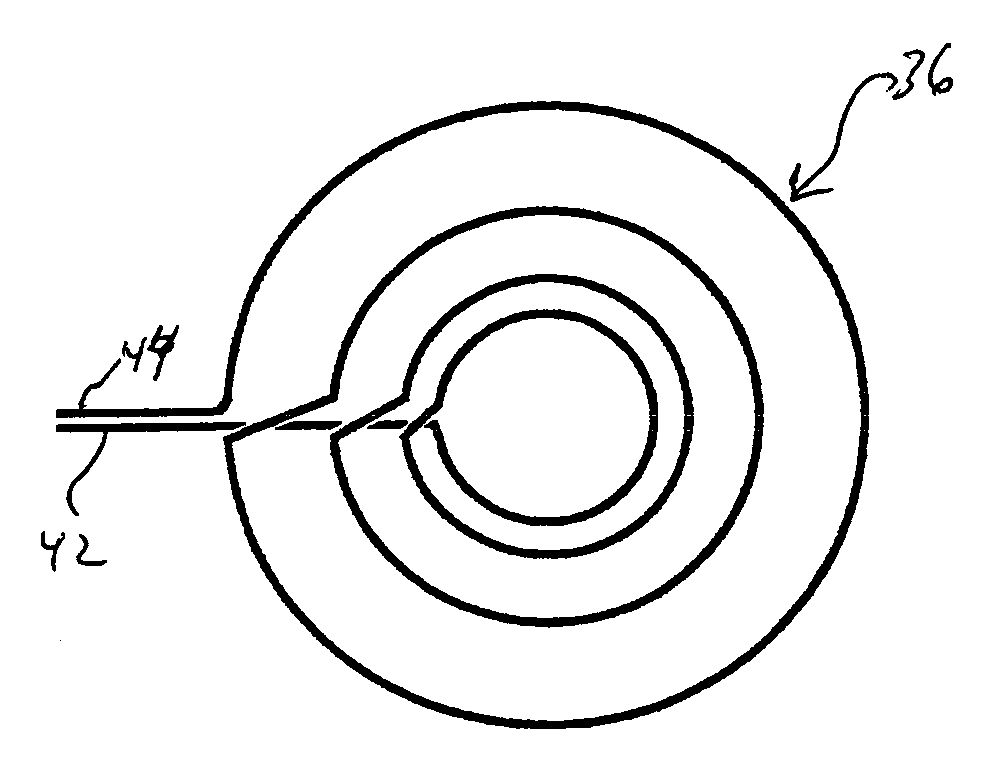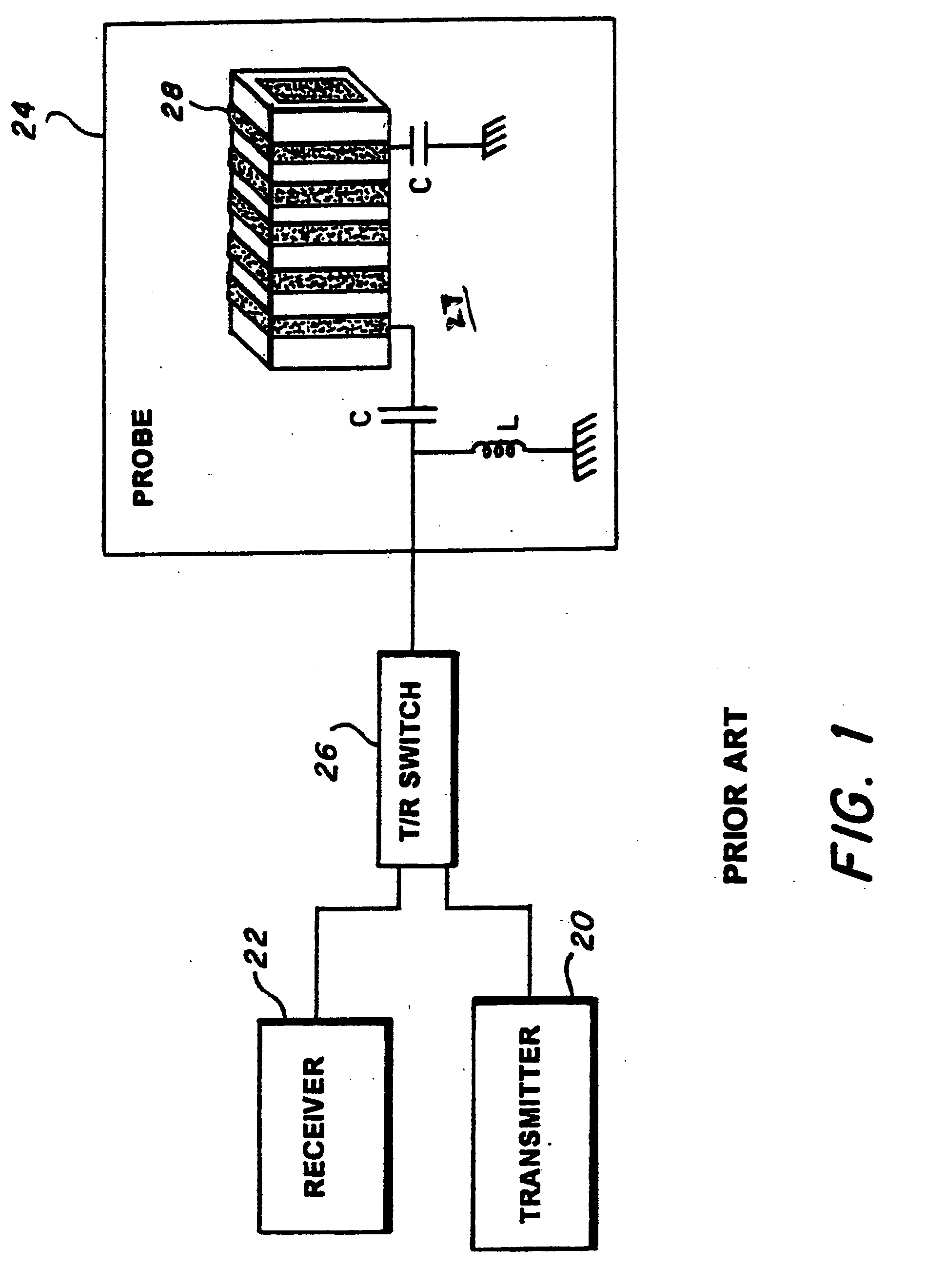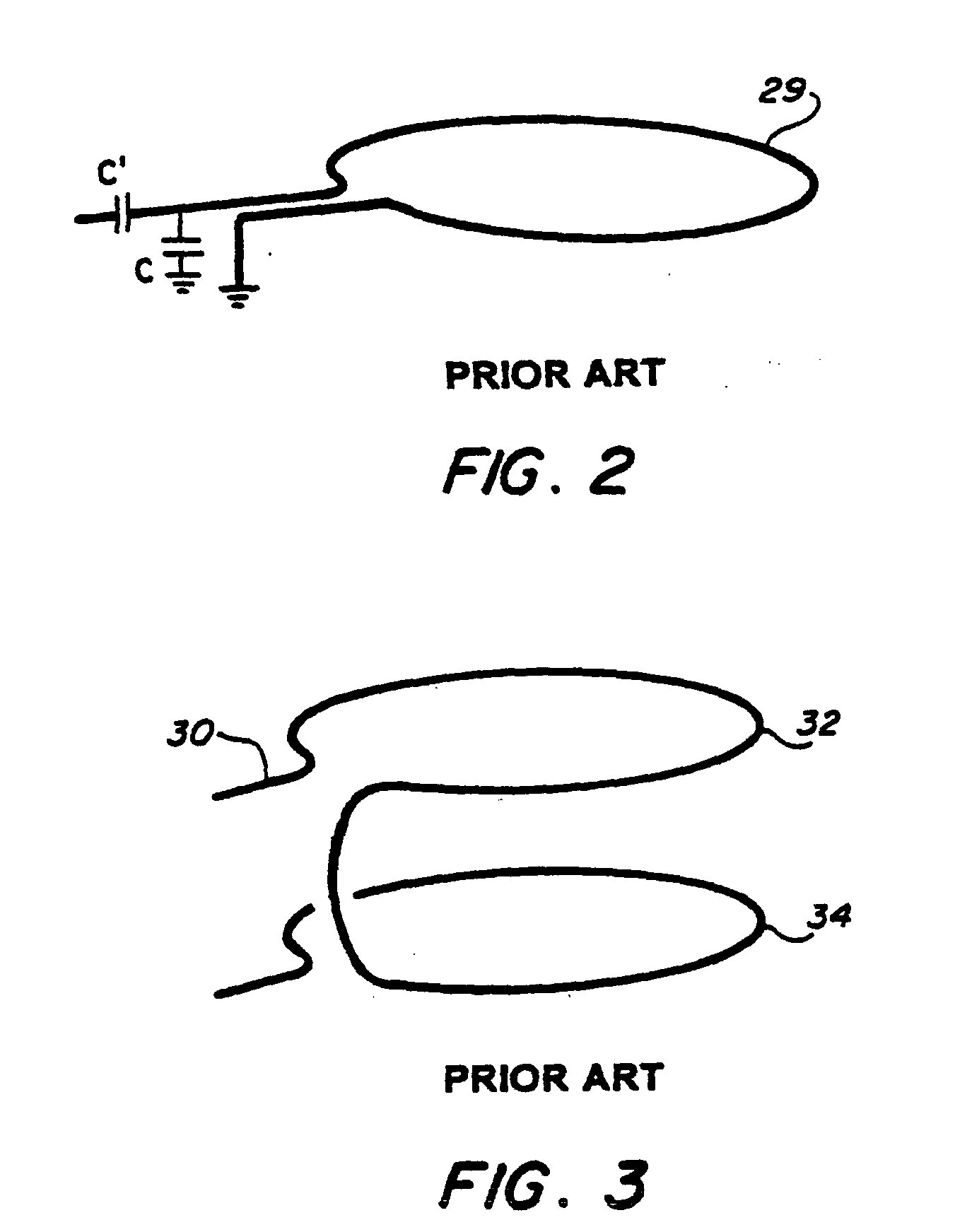Radiofrequency surface detection coil
a radiofrequency surface and coil technology, applied in the field of coils for detecting magnetic resonance signals, can solve the problems of coils that are very inefficient at receiving nmr or nqr, are very inefficient at detecting noise, and have a large noise contribution, so as to improve the detection region, improve immunity, and reduce losses
- Summary
- Abstract
- Description
- Claims
- Application Information
AI Technical Summary
Benefits of technology
Problems solved by technology
Method used
Image
Examples
Embodiment Construction
Reference will now be made in detail to the present preferred embodiments of the present invention, examples of which are illustrated in the accompanying drawings, wherein like reference numerals refer to like elements throughout.
Definition(s): As used herein, the term “asymmetric” when referring to the plural coils of a detector or coil array means that the coils are non-identical, that is, at least one coil of the plurality of coils has a different geometry, different number of turns or windings, or differs in some other physical or operating parameter from the other coil or coils of that embodiment.
Theory Used to Derive Coil Designs
For our purposes it is sufficient to assume that the RF frequency is low enough that displacement current terms can be neglected—that is, we are in the long wavelength limit. For NQR frequencies of the order of 1 MHz and coil dimensions of 1 m or less, this is a reasonable assumption. In addition, for this derivation we assume all regions outsid...
PUM
 Login to View More
Login to View More Abstract
Description
Claims
Application Information
 Login to View More
Login to View More - R&D
- Intellectual Property
- Life Sciences
- Materials
- Tech Scout
- Unparalleled Data Quality
- Higher Quality Content
- 60% Fewer Hallucinations
Browse by: Latest US Patents, China's latest patents, Technical Efficacy Thesaurus, Application Domain, Technology Topic, Popular Technical Reports.
© 2025 PatSnap. All rights reserved.Legal|Privacy policy|Modern Slavery Act Transparency Statement|Sitemap|About US| Contact US: help@patsnap.com



